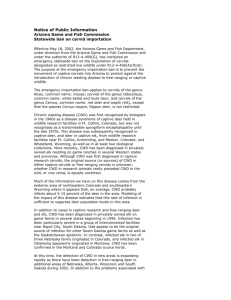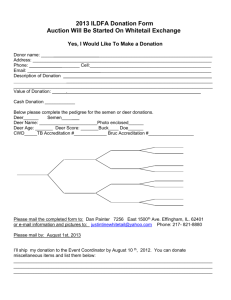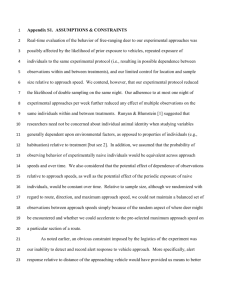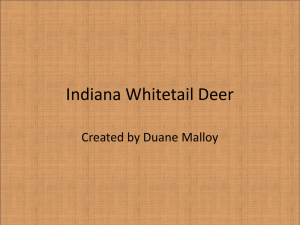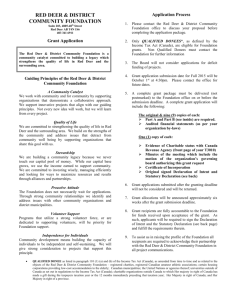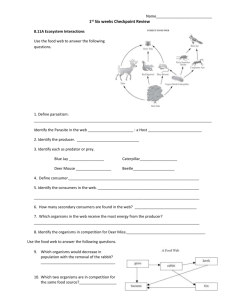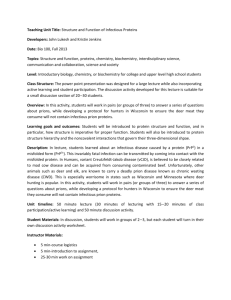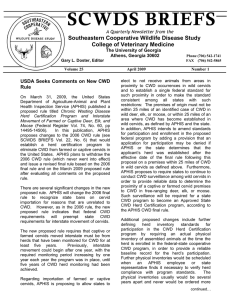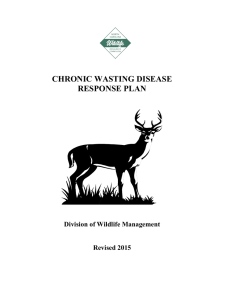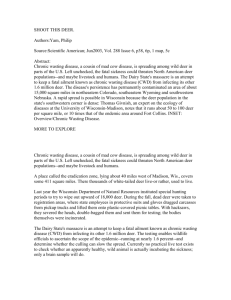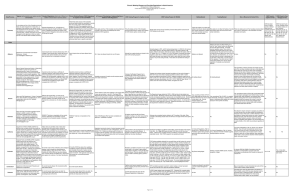109 Cape Cod Drive Cary, NC, 27511 May 12, 2014 Gordon Myers
advertisement
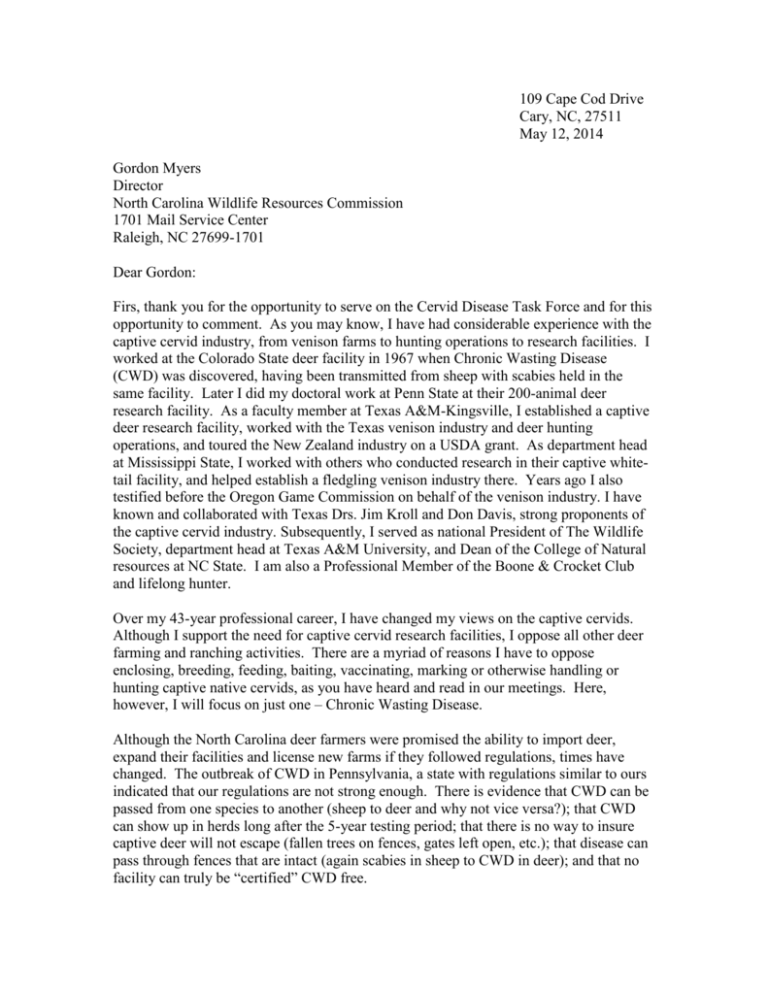
109 Cape Cod Drive Cary, NC, 27511 May 12, 2014 Gordon Myers Director North Carolina Wildlife Resources Commission 1701 Mail Service Center Raleigh, NC 27699-1701 Dear Gordon: Firs, thank you for the opportunity to serve on the Cervid Disease Task Force and for this opportunity to comment. As you may know, I have had considerable experience with the captive cervid industry, from venison farms to hunting operations to research facilities. I worked at the Colorado State deer facility in 1967 when Chronic Wasting Disease (CWD) was discovered, having been transmitted from sheep with scabies held in the same facility. Later I did my doctoral work at Penn State at their 200-animal deer research facility. As a faculty member at Texas A&M-Kingsville, I established a captive deer research facility, worked with the Texas venison industry and deer hunting operations, and toured the New Zealand industry on a USDA grant. As department head at Mississippi State, I worked with others who conducted research in their captive whitetail facility, and helped establish a fledgling venison industry there. Years ago I also testified before the Oregon Game Commission on behalf of the venison industry. I have known and collaborated with Texas Drs. Jim Kroll and Don Davis, strong proponents of the captive cervid industry. Subsequently, I served as national President of The Wildlife Society, department head at Texas A&M University, and Dean of the College of Natural resources at NC State. I am also a Professional Member of the Boone & Crocket Club and lifelong hunter. Over my 43-year professional career, I have changed my views on the captive cervids. Although I support the need for captive cervid research facilities, I oppose all other deer farming and ranching activities. There are a myriad of reasons I have to oppose enclosing, breeding, feeding, baiting, vaccinating, marking or otherwise handling or hunting captive native cervids, as you have heard and read in our meetings. Here, however, I will focus on just one – Chronic Wasting Disease. Although the North Carolina deer farmers were promised the ability to import deer, expand their facilities and license new farms if they followed regulations, times have changed. The outbreak of CWD in Pennsylvania, a state with regulations similar to ours indicated that our regulations are not strong enough. There is evidence that CWD can be passed from one species to another (sheep to deer and why not vice versa?); that CWD can show up in herds long after the 5-year testing period; that there is no way to insure captive deer will not escape (fallen trees on fences, gates left open, etc.); that disease can pass through fences that are intact (again scabies in sheep to CWD in deer); and that no facility can truly be “certified” CWD free. To me the bottom line is, what are the pros and cons of instituting the proposed rule changes, or even of allowing deer farming to continue in North Carolina? I believe this to be a cost-benefit analysis. The only advantage of changing the current rules would be an economic one to a small group of current NC deer farmers. Of the 37 current farms, only 13 have more than 10 animals, and only two have over 50 animals. Only 32% of the captive animals are white-tails. This is obviously a minimal industry in North Carolina, though it could expand. Allowing the importation of cervids and the expansion of the industry would have no economic, sociological or ecological benefit to our native wildlife or to our citizens. Hunting and wildlife watching, however, are major industries in our state. If we no longer allow the import of native or exotic cervids, and if we refuse to permit additional deer holding facilities, we help to protect this multi-million dollar hunting and wildlife watching industry, our $ 9.2 billion animal agriculture industry, and we help to protect one of our major wildlife natural resources. I see no logical reason to why the citizens of North Carolina would want to take this risk. Such a ban, however, would economically impact those few current deer farmers who derive income from this business. I should note that even Texas does not allow the importation of native cervids. I therefore recommend that we: 1. Grandfather all current deer farming operations to allow them to continue to maintain their herds and to export deer to other states. 2. That we increase the fines for importation of live cervids to $ 5,000 per animal. 3. That we cease the fawn rehabilitation program. 4. That we require extirpation of all animals in any captive herd which test positive for CWD. 5. That we not allow the importation of any cervids from any other state. 6. That we no long issue permits for expanding current captive deer facilities or the initiation of new facilities. 7. That we initiate a fee structure such that the costs of inspecting deer farms are born by the deer farmers. 8. Seek means of funding a buy-out program for current deer farms and an insurance program to compensate deer farms for deer herds that may have to be extirpated. We may not be able to keep CWD out of North Carolina altogether, as wild deer can cross state lines. However, the risk to allowing the captive cervid industry to continue in this state far outweighs any benefits to our people or our wildlife. Sincerely, Robert D. Brown, Ph.D.
